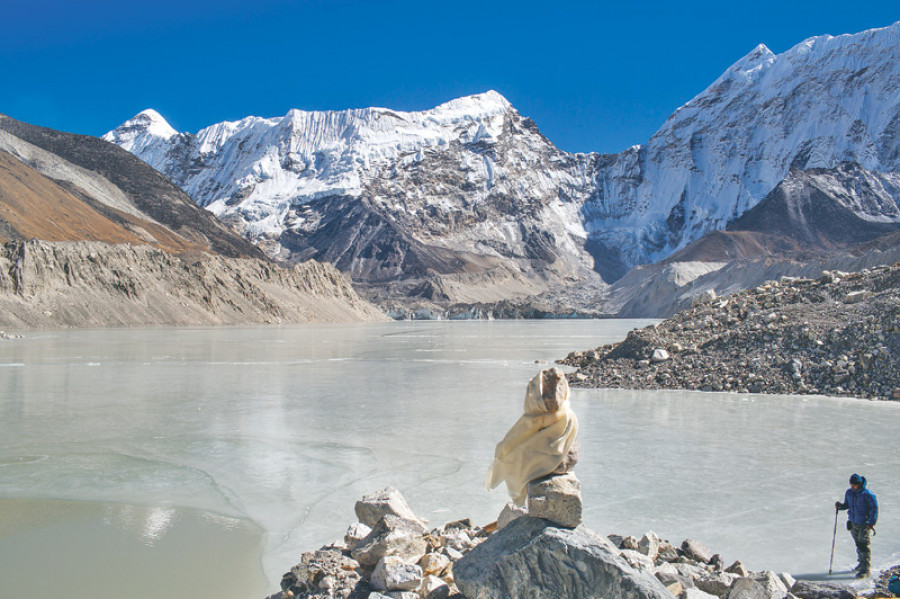Editorial
Close to bursting
We must prioritise monitoring of glacial lakes and set up early warning systems.
With no monitoring and early warning systems, the threat of a glacial lake outburst flood looms large at Makalu Barun National Park in Sankhuwasabha district. Lower Barun, at around 4,550 metres above sea level and approximately 2.7 km long and 600 metres wide, could cause a huge loss of lives and property if it bursts. Settlements downstream on the banks of the Arun River in Sankhuwasabha, Bhojpur, Dhankuta and Sunsari districts would be inundated, according to scientists who’ve identified 20 more glacial lakes at risk of an outburst. Of these 21 glacial lakes in Nepal that can unleash catastrophic damage, only two early warning systems have been installed so far at Tsho-Rolpa and Imja.
The disastrous Nanda Devi glacier event in Uttarakhand state of northern India is a clear demonstration of why Nepal and the region need to urgently heed the warnings from scientists about rapidly melting glaciers in the region, and the trail of destruction they can leave behind if an outburst should occur. If these glacial lakes are left unmonitored, and nothing is done to understand and mitigate the rapid changes in the mountain environment, it’s not a matter of if, it’s a matter of when glacial lake outbursts will occur.
There is growing evidence that the volume of these glacial lakes has increased by about 50 percent in three decades due to climate change. The expansion raises outburst flood risks, which pose significant dangers to mountain communities and mega infrastructures, as past incidents have shown. Scientists who used satellite imagery and remote-sensing data and other tools to study these glacial lakes expect the number and size of the lakes to increase and even accelerate as temperatures rise and melt glaciers.
The warning that these glacial lakes may grow rapidly and burst their moraines is not new. Recent reports have only provided updated estimates of glacial lakes and the devastating impacts they pose for millions of people and infrastructure. Nepal is one of the most vulnerable countries in terms of climate change, which is already being felt in the country. Extreme rain and snowfall events, flash floods and landslides, frequent droughts, glacial melt and rises in the maximum and minimum temperatures have become the new normal, affecting agriculture, biodiversity and hydropower projects.
According to the latest Climate Risk Country Profile developed jointly by the World Bank Group and Asian Development Bank, warming in Nepal is projected to be higher than the global average, and could potentially be 1.2-4.2 degrees Celsius higher by the 2080s. The rises in the maximum and minimum temperatures are also projected to be stronger than average, with temperature increases expected to be strongest during the winter months. The report further validates the impacts of climate change in the country. It warns that natural hazards such as drought, heatwave, river flooding and glacial lake outburst flooding will intensify over the 21st century, potentially exacerbating disaster risk levels and putting human life at risk.
Again, these warnings are not new and serve more as a revision of the devastating impacts of climate change in store, if we do nothing to mitigate the risks and continue ignoring science at our peril. Multiple reports in recent decades have warned that glacial lakes are a ticking time bomb. As Sunday’s flash flood and previous outburst events in the region have shown, there is little warning before these disasters occur and wreak havoc by releasing huge amounts of water and sweeping everything in their path. Nepal must take the lead to bring the region together to assess the risks as temperatures soar. We must prioritise monitoring of glacial lakes and set up early warning systems to save lives and property from these imminent threats.




 5.4°C Kathmandu
5.4°C Kathmandu












%20(1).jpg&w=300&height=200)

